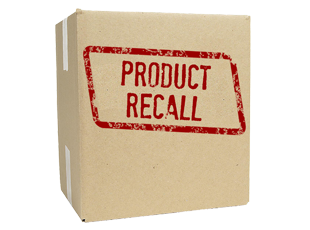Systems automation, key to Traceability
Traceability improvement through systems automation.
 Systems automation are not as widespread as desired. Nowadays many manufacturers still simply recall every item that was produced within a timeframe to avoid a huge task of manually identify which lots were contaminated in case of outbrake. Although they waste less time, the recall costs are much higher than needed. That scenario is usual when using paper records for production and distribution tracing.
Systems automation are not as widespread as desired. Nowadays many manufacturers still simply recall every item that was produced within a timeframe to avoid a huge task of manually identify which lots were contaminated in case of outbrake. Although they waste less time, the recall costs are much higher than needed. That scenario is usual when using paper records for production and distribution tracing.
By automating systems and records, manufacturers can improve plant efficiency, product quality and food safety, which help reduce business costs and minimize impact when product recalls occur. These recall costs can range from recovering and destroying products, taking products off shelves, time required to review products in the plant, and the time to prepare for annual audits.
In the fall of 2012, Sunland Inc.’s peanuts, peanut butter, cashew butter and almond butter products were linked to a Salmonella outbreak. As a result, Sunland recalled everything produced for more than 2 years worth of products. If there is no automated system in place, it is almost impossible to locate and isolate every lot number that was contaminated.
In addition, when a problem occurs during the production process, operators are called to address the issue and stop working in their usual activity.
But he worst thing is that a massive recall can damage a brand name, as well as an industry as a whole. The highest recall costs comes from business interruption, the time to get production up and running again plus the time the customer waits to buy the product again.
By implementing automated reporting systems, companies can easily and much more quickly determine which lots were contaminated and recall only those affected products. This can improve efficiency, reduce costs and avoid unnecessary or excessive recalls. These systems are fundamental in enabling producers to quickly identify the root cause of a problem when a bad batch is produced in the factory.
Catching the bad batch prior to it leaving the plant aligns with FDA’s objective to shift its strategy to a more proactive approach of preventing contamination, versus responding to it after the much of the damage is already done. However, in the event that a bad batch does get out of the plant, the automated data collection systems provide the information necessary to help manufacturers isolate the incident.
In addition, manufacturers use these systems to organize and store electronic data in a way that reduces the audit preparation time from weeks to hours.
Through systems automation food and beverage companies become more efficient and proactive, enabling them to drive costs out of their supply chain while at the same time contributing to better food safety. This increase in their competitiveness is the reason why they are moving towards automation.


